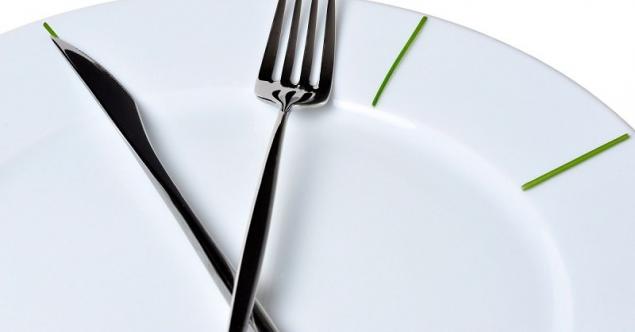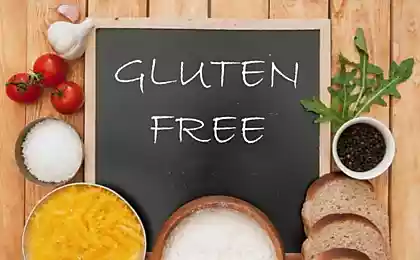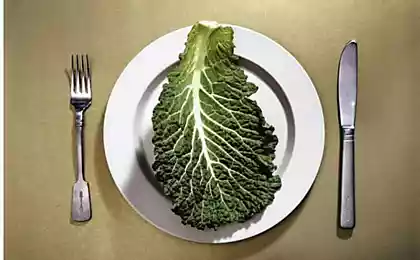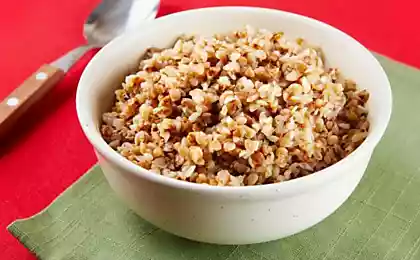227
How to follow an interval diet
Do you want to lose weight without giving up your favorite foods? "Site" He knows that way! Japanese Diet "Food Window" allows you to get rid of excess weight without tedious calorie counting and strict food prohibitions.

DepositPhotos
It is based on the mechanism of autophagy - a natural process, for the study of which a specialist in cell biology from Tokyo University of Technology Yoshinori Osumi was awarded the Nobel Prize in Medicine in 2016.

To start the process of losing weight, rejuvenating and healing the body, you should learn what is "power window" and how it affects us. This is the time between our first and last meal of the day. If you eat breakfast at 8:00 and dinner at 20:00, your food window stretches for 12 hours.

The principle of the diet "Food Window" is interval fasting, taking into account circadian rhythms. When we starve for a while, the cells begin to partially “eat” themselves, getting rid of old or damaged areas, and thus rejuvenate themselves. This process is called autophagy.

“We found that autophagy protects against diseases such as Parkinson’s disease, Huntington’s disease and some forms of dementia.” Apparently, this process also helps fight infection and inflammatory processes, says David Rubinstein, professor of molecular neurogenetics at the University of Cambridge.
The process of autophagy can be started as a result of changes in the diet and through fasting.
To find the optimal interval of such fasting, an experiment was conducted in which 4 groups of overweight people participated. The food window of the first group was 12 hours, the second 8 hours, the third 6 hours, and the fourth 4 hours.

The results showed that narrowing the window of nutrition from 12-14 to 6-8 hours is the key to losing weight: with this diet, the body burns more fat at night, reduces hunger and the amount of energy consumed, and increases metabolic flexibility.
Those who eat only from 8:00 to 14:00 have a significantly lower risk of diabetes, anemia or obesity than those who eat from 8:00 to 20:00. A small window of nutrition is good for overall health.
It is important to narrow the food window taking into account individual circadian rhythms: fluctuations in the internal clock, tied to the change of day and night. It is best to open the food window in the morning when the cortisol hormone is released. This is when we feel most energetic and want to eat.

In the evening, melatonin is produced and the body prepares for sleep, slowing down internal processes, including digestion. Therefore, it is better to refuse to eat food. To achieve the optimal coincidence of the food window with biological rhythms, you need to adhere to the following rules.
Interesting fact: the maximum release of the hunger hormone occurs at 8:00, 13:00 and 19:00. 1-2 hours after each peak, regardless of whether you have eaten, the wave subsides.
Deciding to narrow the food window and not eat after 16:00-17:00, do not trust the feeling of hunger that will call you to the refrigerator every 3 hours. Drink tea, kefir or water and wait 2 hours. The hunger will go away.

At first, to overcome the desire to eat after 18:00 will help snacks with fruit. After a week, your body will get used to this rhythm of nutrition, and you will get rid of the evening tides of hunger, and in the morning you will feel more cheerful.
How to induce autophagy without starving The effect of self-cleaning cells, the truth is not as strong as it causes intervalIt can be obtained by including a number of substances in your diet.
Despite the fact that people in the south of France consume quite a lot of fat, they have much lower rates of cancer and cardiovascular diseases than people in other countries in Europe and the United States.
This discrepancy, called the “French Paradox,” gave rise to the Mediterranean diet, one of the most popular food systems in Europe, which UNESCO has recognized as a national heritage.
How to train a woman in adulthood, if there are certain features of the body, health problems? "Site" Answers the most common questions of our readers.

DepositPhotos
It is based on the mechanism of autophagy - a natural process, for the study of which a specialist in cell biology from Tokyo University of Technology Yoshinori Osumi was awarded the Nobel Prize in Medicine in 2016.

To start the process of losing weight, rejuvenating and healing the body, you should learn what is "power window" and how it affects us. This is the time between our first and last meal of the day. If you eat breakfast at 8:00 and dinner at 20:00, your food window stretches for 12 hours.

The principle of the diet "Food Window" is interval fasting, taking into account circadian rhythms. When we starve for a while, the cells begin to partially “eat” themselves, getting rid of old or damaged areas, and thus rejuvenate themselves. This process is called autophagy.

“We found that autophagy protects against diseases such as Parkinson’s disease, Huntington’s disease and some forms of dementia.” Apparently, this process also helps fight infection and inflammatory processes, says David Rubinstein, professor of molecular neurogenetics at the University of Cambridge.
The process of autophagy can be started as a result of changes in the diet and through fasting.
To find the optimal interval of such fasting, an experiment was conducted in which 4 groups of overweight people participated. The food window of the first group was 12 hours, the second 8 hours, the third 6 hours, and the fourth 4 hours.

The results showed that narrowing the window of nutrition from 12-14 to 6-8 hours is the key to losing weight: with this diet, the body burns more fat at night, reduces hunger and the amount of energy consumed, and increases metabolic flexibility.
Those who eat only from 8:00 to 14:00 have a significantly lower risk of diabetes, anemia or obesity than those who eat from 8:00 to 20:00. A small window of nutrition is good for overall health.
- The risk of breast cancer is reduced.
- Blood pressure is dropping.
- The risk of heart disease is reduced.
- Sleep quality is improving.
It is important to narrow the food window taking into account individual circadian rhythms: fluctuations in the internal clock, tied to the change of day and night. It is best to open the food window in the morning when the cortisol hormone is released. This is when we feel most energetic and want to eat.

In the evening, melatonin is produced and the body prepares for sleep, slowing down internal processes, including digestion. Therefore, it is better to refuse to eat food. To achieve the optimal coincidence of the food window with biological rhythms, you need to adhere to the following rules.
- Get up at 6:00-7:00 a.m.
- Have breakfast 30 to 60 minutes after waking up.
- Start work 2-3 hours after waking up.
- Eat more for breakfast than lunch.
- Narrow the food window to 6-8 hours, without changing the calorie intake.
Interesting fact: the maximum release of the hunger hormone occurs at 8:00, 13:00 and 19:00. 1-2 hours after each peak, regardless of whether you have eaten, the wave subsides.
Deciding to narrow the food window and not eat after 16:00-17:00, do not trust the feeling of hunger that will call you to the refrigerator every 3 hours. Drink tea, kefir or water and wait 2 hours. The hunger will go away.

At first, to overcome the desire to eat after 18:00 will help snacks with fruit. After a week, your body will get used to this rhythm of nutrition, and you will get rid of the evening tides of hunger, and in the morning you will feel more cheerful.
How to induce autophagy without starving The effect of self-cleaning cells, the truth is not as strong as it causes intervalIt can be obtained by including a number of substances in your diet.
- Urolitin A
It is formed by intestinal microflora from the juice of pomegranates, strawberries, raspberries and red wine aged in oak barrels.
DepositPhotos - spermidine
Contained in mushrooms, cheese, grapefruit. - Resveratrol.
Contained in the skin of grapes and other fruits, in cocoa and nuts. - curcumin
It is part of turmeric root and curry seasoning. - catechin
Contained in green tea and cocoa. Found in many fruits and berries (apples, quince, apricots, peaches, plums, cherries, strawberries, currant, raspberries). - Vitamin B3
It is part of white meat, bread, oats, legumes, barley, mushrooms, peanuts, walnuts.
DepositPhotos
Despite the fact that people in the south of France consume quite a lot of fat, they have much lower rates of cancer and cardiovascular diseases than people in other countries in Europe and the United States.
This discrepancy, called the “French Paradox,” gave rise to the Mediterranean diet, one of the most popular food systems in Europe, which UNESCO has recognized as a national heritage.
How to train a woman in adulthood, if there are certain features of the body, health problems? "Site" Answers the most common questions of our readers.

























